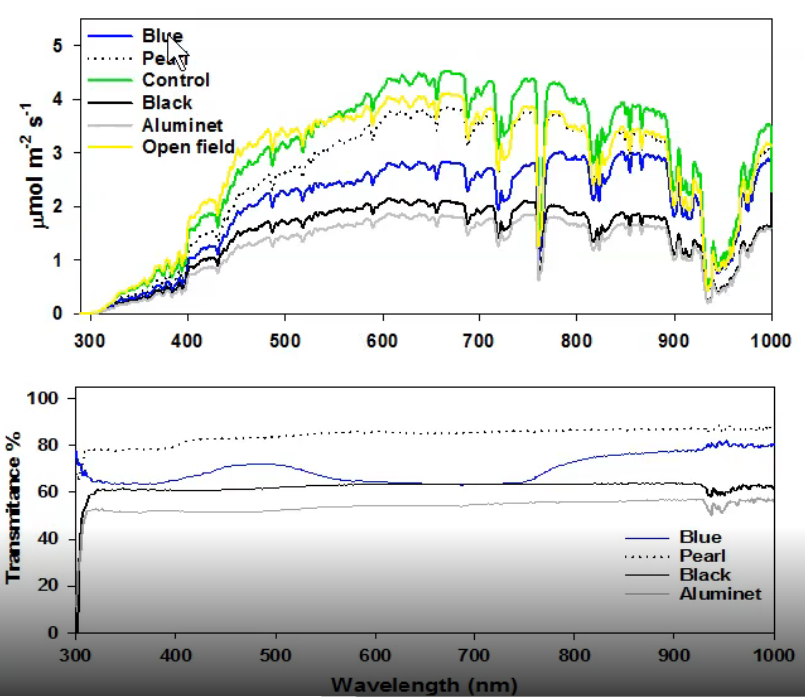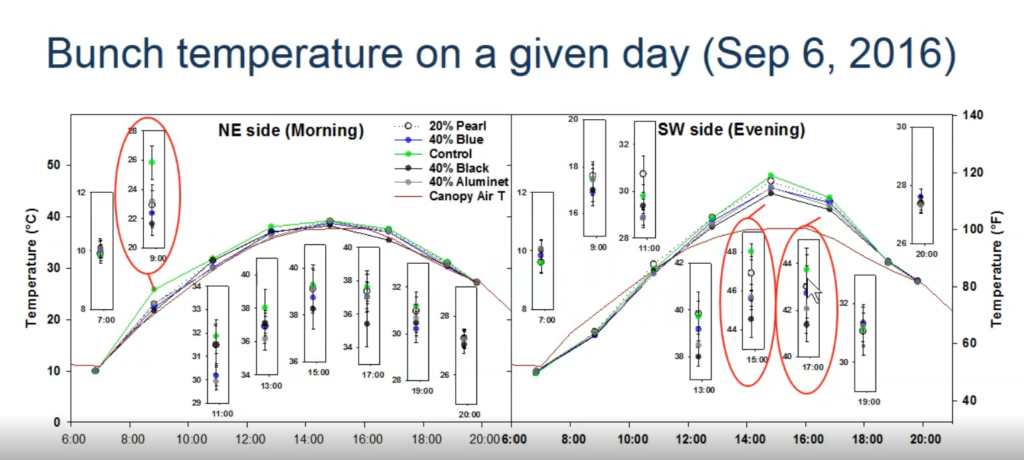Ask a Viticulturist: Cut from the same shade cloth
Does color really matter?
With the dramatic ups and downs of the climate, shade cloth is rapidly becoming a necessity here in California. I’ve written a bit about shade cloth before, but recently we were asked by a client if colored shade cloth made any difference.
Now up until last year, I was under the impression that shade cloth came in black and well…black. That was before I laid eyes on acres upon acres of one vineyard laden with bright azure-colored shade cloth. It was as though the vineyard was infested with giant Greek spiders.
Ew.
No offense to the Greeks or their giant spiders, but it wasn’t a good color for a vineyard. Was it more effective though?
Luckily, the UCDavis Extension led by Kaan Kurtural has done the legwork for us. I urge you to drill down and view his presentation here. Otherwise, for those looking for the CliffsNotes version, choose the black stuff.
The Study
Kurtural et al. examined the effectiveness of 4 different shade cloth colors: 40% black, 40% blue, 40% Aluminet (Shiny), and 20% Pearl. The percentages refer to how much light each cloth excluded. They compared these shade cloths to a control, where no shade cloth was used.
It’s important to go over some physiology at this point, mainly how grapes are affected by light and heat. Light, more specifically UV and visible light, can cause the increased synthesis of anthocyanins (color) and flavonoids. Excessive heat however, can cause the degradation of these same compounds even if you don’t see physical signs of sunburn.
It’s important to strike a balance here: you want your fruit exposed enough to synthesize desirable color and flavonoids without overheating.
For you Californians, and I’d love to hear from growers outside of the Golden State, you’re better off guarding against the heat. Unless you’ve grown a bananas canopy, you’re going to get enough light into your fruit zone. Heat exceeding 35°C (95°F) causes the degradation of anthocyanin and flavonoids in addition to depleting acidity and denaturing enzymes important for ripening.
So which shade cloth does this better and why? Aside from aesthetics, the difference in shade cloth color lies in what part of the spectrum is absorbed and how much is transmitted. See the chart below. Black absorbs all parts of the spectrum at an even 40%, while blue allows the passage of more light in the blue and the Infrared portion of the spectrum into the canopy. While common sense would say that Aluminet reflects more light, it also seems to reflect light into the canopy hence it’s elevated transmittance. Pearl allows the least amount of light through, but not by much.

Results?
This study shows few differences. The canopies behave about the same in terms of water efficiency, carbon assimilation, growth, stomatal conductance, and water stress. The yield was the same. Acidity among all the colors was also the same, although it was significantly lower in the uncovered control block.
As far as what was better at reducing temperature in the fruit zone, black was the most effective. This led to higher anthocyanin content in the berries at harvest.

The other take away from this study is that any shade cloth is better than no shade cloth. If you can manage to cover your fruit with a relaxed VSP or sprawl, that would still be better than hanging your fruit out in full sun. With the price of shade cloth and labor being what they are, you might just want to work with the shade nature gives you in the first place.
Long story short: get the black shade cloth. Don’t over think it.
Citations
Kurtural, K., & Cooper, M. (2017, September). Partial Solar Radiation Exclusion with Color Shade Cloths May Improve Red Wine Grape Composition. In 2017 ASHS Annual Conference. ASHS.

